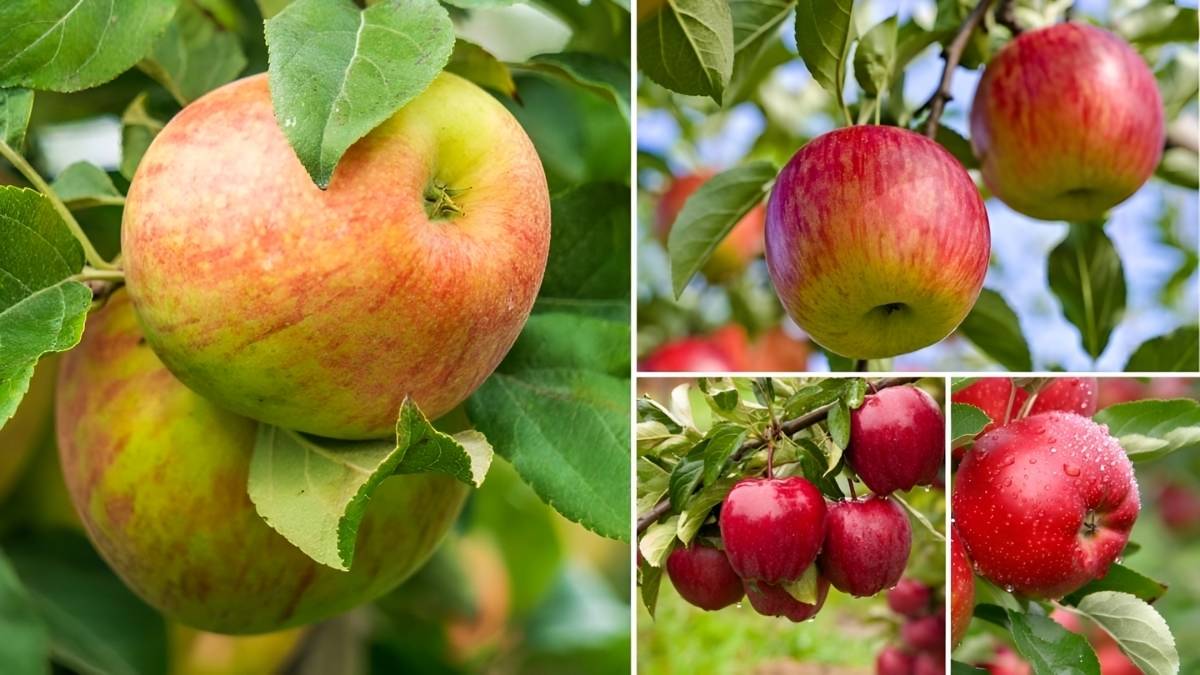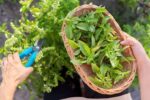Join on WhatsApp
Get the latest updates directly on WhatsApp – motivation, news & more!
Growing apple trees is a rewarding experience, but to enjoy healthy growth and a bountiful harvest, seasonal care is essential. Apple trees have specific needs that change throughout the year. Knowing what to do in spring, summer, and winter helps keep your tree productive, disease-free, and thriving for years to come. This guide will walk you through the most important tasks for each season so your apple tree stays on the right track.
Spring Apple Tree Care
Spring is the season of awakening for apple trees. As temperatures rise and buds begin to swell, this is the time to focus on pruning, fertilizing, and monitoring for pests and diseases. Everything you do in spring sets the tone for the year’s growth and fruiting.
The first task of spring should be pruning. This is best done in late winter to early spring, before new growth starts. Prune away any dead, damaged, or crossing branches. Shape the tree to allow sunlight and air to reach the center, which helps reduce disease and improves fruit quality. Focus on maintaining a strong central leader and well-spaced scaffold branches.
Next, apply fertilizer. Apple trees benefit from a balanced, slow-release fertilizer high in nitrogen to promote healthy leaf and shoot growth. You can use compost or a tree-specific fertilizer blend. Apply it around the drip line of the tree, avoiding direct contact with the trunk.
Spring is also the time to inspect for pests like aphids, scale insects, and tent caterpillars. Diseases such as apple scab and powdery mildew may begin to appear as buds open. Consider applying a dormant oil spray before bud break and a fungicide as the blossoms begin to form if you’ve had issues in previous years.
Finally, water your tree regularly if spring is dry in your region. Apple trees need consistent moisture during the early stages of growth and flower development.
Summer Apple Tree Care
During summer, your apple tree is in full swing, with leaves, blossoms, and small fruits developing. This is the time to focus on maintaining tree health, thinning fruit, and preventing summer stress.
One of the key summer tasks is fruit thinning. After the natural fruit drop in early summer, you should go in and thin the remaining apples manually. This means removing some of the young fruit so that each cluster has only one apple and each apple has about 6 inches of space around it. Thinning reduces the risk of branch breakage, encourages larger and better-quality fruit, and helps prevent alternate bearing.
Watering becomes even more important in summer. Apple trees need about an inch of water per week, either from rainfall or irrigation. Deep watering at the root zone is preferred over frequent light watering. Avoid wetting the leaves and fruit, as this can encourage disease.
Pest and disease management continues through summer. Keep an eye out for codling moths, apple maggots, and mites. Bagging individual fruit or using sticky traps can help reduce infestations. Regularly check the leaves for any signs of fungal infections or leaf spots and treat accordingly if needed.
Summer is also a time for light maintenance pruning if necessary. If you see water sprouts or suckers growing from the base or trunk of the tree, remove them. These shoots divert energy from fruit production and can make the tree more susceptible to disease.
Lastly, mulch around the base of the tree to help retain moisture and suppress weeds. Keep mulch a few inches away from the trunk to prevent rot and rodent damage.
Winter Apple Tree Care
Winter may seem like a dormant period, but it’s a critical time for preparing your apple tree for the next growing season. The focus during this period is protection, planning, and cleanup.
The most important winter task is protecting your tree from extreme cold and animal damage. Young apple trees are especially vulnerable to frost cracks and sunscald. Wrapping the trunk with tree guards or using white latex paint can help reflect sunlight and prevent cracking during freeze-thaw cycles.
Rodents like voles and rabbits may chew on the bark during winter, especially under snow cover. Installing wire mesh or tree wraps around the lower trunk can help deter these pests.
This is also a good time to clean up the area around the tree. Remove any fallen leaves, mummified fruit, or pruned branches left from earlier in the year. These materials can harbor diseases and pests that will reemerge in spring.
Winter is also ideal for planning. Evaluate how your tree performed over the past year. Were there any signs of nutrient deficiency? Did pests or disease cause problems? Use this time to research and prepare for improvements in spring care. If necessary, purchase dormant oil sprays or fertilizers now so you’re ready when the weather warms.
For older trees, late winter is the perfect time to start pruning. This should be done on a dry day before the buds begin to swell. Avoid heavy pruning in freezing conditions, as cuts may not heal properly.
A Year-Round Routine for Healthy Apple Trees
Caring for apple trees is not a one-time task. Each season has its unique role in the tree’s development and productivity. Spring focuses on pruning and new growth, summer on fruit management and hydration, and winter on protection and cleanup. Together, these seasonal tasks form a cycle that promotes long-term health and high yields.
Successful apple tree care requires observation, patience, and a willingness to adjust. No two years are exactly alike weather, pests, and even the tree’s own cycle may vary. However, by sticking to the core practices in each season, you can greatly improve your chances of harvesting crisp, juicy apples year after year.
Final Thoughts
A well-maintained apple tree rewards you not just with fruit, but with beauty, shade, and the satisfaction of growing something meaningful. By understanding and following seasonal care routines, you take the guesswork out of growing and give your tree the best chance to thrive.
Whether you’re a new gardener or an experienced grower, keeping up with the rhythms of spring, summer, and winter will ensure your apple tree stays healthy, productive, and a joy to have in your backyard.




